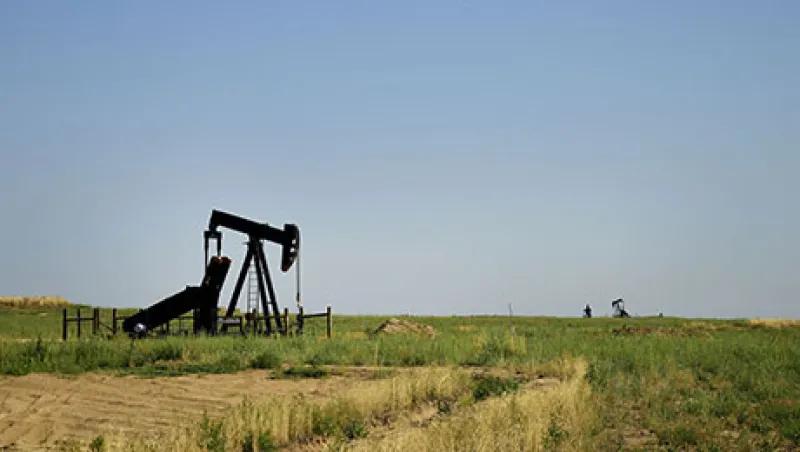Talk of an energy revolution in North America has sent investors rushing to buy the securities of companies that have announced large shale deposits. Shares of Pioneer Natural Resources Co., for example, have risen almost sevenfold in five years — the Irving, Texas, oil and gas exploration and production company trades at an eye-popping forward price-earnings ratio of 37. But when enthusiasm in any investment proposition becomes so intense, seasoned investors start to question whether it makes sense any more.
Count Timothy Gramatovich among the skeptics. As co-founder and CIO of Santa Barbara, California–based Peritus Asset Management, Gramatovich specializes in high-yield corporate credit. His firm, which manages $1 billion for institutional and retail investors, holds no bonds issued by shale producers.
“I take issue with the sustainability of shale production, and with its economics,” says Gramatovich, who thinks that the basins where shale deposits are found “will be exploited in years, not decades.” He argues that the costs of getting shale oil out of the ground are simply too high. As a result, “there’s never any sustainable free cash flow,” he adds.
One way to get around this problem is to concentrate on the companies making money by providing the infrastructure that producers need to get shale oil out of the ground and transport it. This fits firmly with the old investment story that the people who profited the most from the California gold rush were those who sold the picks and shovels, rather than the prospectors themselves.
The “picks and shovels” strategy is popular with Hermes Credit, an arm of London-based £27.4 billion ($45.2 billion) Hermes Fund Managers. Hermes Credit has in the past held paper issued by MarkWest Energy Partners, for example, a natural gas pipeline and services company that has what Hermes senior credit analyst Ron Daigle describes as “a symbiotic relationship” with various producers like Range Resources Corp. with deposits in Pennsylvania’s Marcellus Shale basin. The London-based analyst says that most of the revenue of pipeline companies does not depend on the volume of oil and gas that goes through their pipelines. “In most cases, the vast majority of revenue is contracted at regulated rates and fee-based contracts, minimizing exposure to commodity pricing,” Daigle says, leaving investors less exposed to the vagaries of production and commodity prices.
Neil Gregson, fund manager, global natural resources equities, at $1.7 trillion J.P. Morgan Asset Management in London, acknowledges that maintaining shale production can be challenging. Drilling shale formations, he says, “is different from [drilling in] conventional fields where you’ll get 20,000 barrels a day, and will stay at that level for 20 years.” For shale oil, he adds, “a well that starts by producing 1,000 barrels a day might produce only 400 barrels a day six months later. These sharply declining rates mean that you have to drill and drill and drill. You have to be very busy to keep production growing.”
Gregson agrees that the business models of some shale producers may not be viable. He emphasizes, however, that there is one key virtue for investors in shale oil and gas production and other so-called unconventional extraction based on similar methods, including horizontal drilling. Investors in conventional oil and gas production usually have to take on the exploration risk, the guesswork of where and how much oil and gas there might be. The inherent risks in this exercise are borne by investors, since an absence of big discoveries hits stock and bond prices.
By contrast, unconventional oil and gas production is based on using newly enhanced technologies to drill into long-known deposits that were previously inaccessible or uneconomical. “You know there is oil in the basin; you know how much there is,” Gregson says. “So the geological risks are fairly low. Instead there’s an investment risk, in terms of capital and operating expenditures.” For this reason, unconventional production is, he concludes, in a sense an investment in manufacturing.
J.P. Morgan Asset Management recently invested in Whitecap Resources, a Calgary-based oil company that focuses on providing monthly dividends to its shareholders through a combination of acquisitions and organic growth of its existing oil assets. Gregson likes Whitecap because of its strong management team and promising oil deposits in Alberta. Like many other investors in shale, he also places great importance on a strong corporate record in making the right purchases of companies and deposits.
See also our article on U.S. oil shale, “Will the 1970s Oil Ban Finally Be Lifted?”






